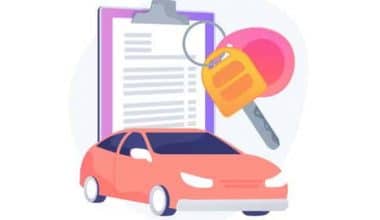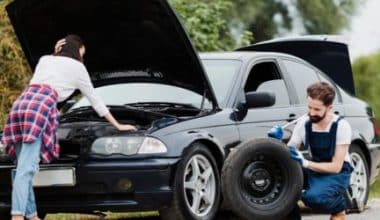When finding the right car insurance policy for you, it’s important to understand the different types of coverage and how much you need. This includes whether you want liability or full-coverage car insurance.
Liability-only insurance pays for injury and damage to others you’re responsible for. In comparison, full-coverage policies cover both your liability and property damage to your own vehicle.
Liability or Full-Coverage Car Insurance: Understanding Liability Car Insurance
Liability car insurance is the part of a car insurance policy that provides financial protection for a driver who harms someone else or their property while operating a vehicle. Car liability insurance only covers injuries or damages to third parties and their property—not to the driver or the driver’s property, which may be separately covered by other parts of their policy.
The two components of liability car insurance are bodily injury liability and property damage liability. Every state except New Hampshire requires drivers to have some degree of liability coverage.
Liability car insurance helps cover the cost of damage resulting from a car accident. In many states, if a driver is found to be at fault in the accident, their insurance company will pay the property and medical expenses of other parties involved in the accident up to the limits set by the policy.
For states with no-fault auto insurance, however, drivers involved in an accident must first file a claim with their own insurance companies regardless of who was at fault. In those states, drivers are typically required to purchase personal injury protection (PIP) coverage, which covers their accident-related medical expenses as well as those of their passengers.
Liability car insurance consists of two types of coverage:
Bodily injury
The bodily injury liability portion of a car insurance policy covers an at-fault driver, so they are not liable for others’ emergency and ongoing medical expenses, loss of income, or funeral costs. It also helps cover the policyholder’s legal fees when the accident results in a lawsuit.
Property damage
Property damage liability helps cover the costs of repairing or replacing the vehicles of other drivers involved in the accident. It also covers the damage done to other forms of property by the policyholder’s vehicle, such as fencing, mailboxes or buildings.
What is covered
Liability insurance includes two coverage types:
- Bodily injury liability coverage: Covers when you’ve caused an accident that resulted in an injured person’s or multiple people’s medical bills, loss of income, legal fees if you’re sued, and pain and suffering.
- Property damage liability coverage: Covers when you’ve caused an accident that resulted in costs requiring repair or replacement of damaged property, such as a person’s vehicle or mailbox. It can also cover your legal defense if you’re sued.3
Auto insurance providers set coverage limits on each liability coverage type. Bodily injury limits rely on a per-person and per-accident basis. If damages from an accident exceed your limits, then you’ll be responsible for the difference.
What is not covered
Your liability car insurance policy won’t cover:
- Costs if you or someone in your vehicle gets hurt
- Repairing your car due to an accident that’s your fault
- Uninsured or underinsured drivers damaging your car
- Claims that are higher than your insurance liability limit
Price
The liability car insurance cost depends on location, driving record, age, and claims history. The average premium for liability coverage nationwide was $631, or about $52 per month, in 2020, according to a National Association of Insurance Commissioners (NAIC) report published in 2023.
Liability or Full-Coverage Car Insurance: Full-coverage car insurance
The term “full coverage car insurance” does not refer to an actual policy type, but rather a policy that consists of liability, collision and comprehensive car insurance.
While liability is required in most states, collision and comprehensive car insurance is optional. However, if you have a lease or loan for your vehicle, your lender likely requires you to buy comprehensive and collision coverage.
Comprehensive and collision are separate coverage types but are often sold together. Both come with a deductible, which is the amount deducted from an insurance claim check. The maximum payout for both is the actual cash value of your vehicle, or how much it’s worth right before it’s totaled, minus the deductible.
Here’s what they cover:
- Collision insurance. This pays to repair or replace your car if you get into a car accident, regardless of fault. For example, if you back into a pole, you can file a collision claim. It does not pay for damage to the other person’s car—your liability insurance covers that.
- Comprehensive insurance. This pays to repair or replace your car for problems like theft, fire, hail, flood, falling objects, collisions with animals and vandalism. For instance, if a tree falls on your car, or it’s damaged by hail, or you hit a deer, you can file a comprehensive claim.
What is covered
Your lender will likely require full-coverage car insurance when you take out a car loan, but it’s not a policy type offered by insurers. Instead, “full coverage” usually means you need to purchase liability coverage along with these two coverage types:
- Collision car insurance coverage: Collision coverage helps to cover the cost of repairing or replacing your vehicle if you’re involved in an accident alone, with another car, or with a stationary object like a light pole.
- Comprehensive car insurance coverage: Comprehensive car insurance coverage helps cover vehicle damage costs resulting from non-collision causes. Examples include damage from floods, fires, animals, theft, and falling tree branches.
Together, collision and comprehensive policies help to cover the costs of repairing or replacing your vehicle in most scenarios. Based on your state or insurer, full coverage for a consumer could also include:
- Higher limits than the state minimum for bodily injury and physical damage liability coverage
- Personal injury protection (PIP) insurance or medical payments insurance for your or your passengers’ accident-related injuries
- Uninsured or underinsured motorist (UM/UIM) coverage to protect your vehicle from hit-and-runs and drivers without adequate insurance
- Other coverage. You can add towing, roadside assistance, pet coverage, rental car, and gap coverage to cover the difference between your loan or lease amount and any insurance payout.
What is not covered
Full-coverage packages vary by the issuing company, so ask what is and is not included in the policy. There isn’t a universal full-coverage policy that covers every possible risk or situation. For example, your policy will likely contain exclusions that could lead to a claim denial—such as using your car for ride-sharing.
Price
Like liability coverage, the price of full-coverage car insurance also depends on various factors. The average annual premium nationwide is $1,176, or $98 per month, according to the latest data from the NAIC.10
To find the best deal, it’s best to shop around and get quotes from a few reputable insurers.
Liability or Full-Coverage Car Insurance: Differences
| Liability Car Insurance | Full-Coverage Car Insurance | |
| Typically Covers | • Other driver’s bodily injuries • Other people’s car or property damage you cause | • Other driver’s bodily injuries • Property damage you cause to others • Damage to your car from collision and non-collision sources |
| Limits | Meets minimum state-required coverage limits | May have higher coverage limits for liability coverage; collision and comprehensive limits based on the car’s actual value |
| Average Cost (annual)1 | $631 | $1,176 |
| Mandatory | In most states | Only when you finance or lease a vehicle; some jobs may also require full-coverage car insurance |
| Deductible2 | None | A deductible is due when filing a claim on a collision or comprehensive policy claim, ranging from $100 to $2,500; the deductible may be set by your lender. |
| Recommended | Always | If: • You have an auto loan • Your car is high-value • You don’t want to pay repair costs out of pocket • You’re likely to file a claim for damage • You want extra coverage |
Which is required? Liability or Full-Coverage Car Insurance
Liability car insurance coverage or an equivalent is required in 48 U.S. states, although the necessary amounts and coverage types vary. There are two exceptions:
- In New Hampshire, you don’t have to carry coverage, but you must be able to prove that you have sufficient funds to meet the minimum financial responsibility requirements.6
- In Virginia, you can pay an uninsured motor vehicle fee of $500 per year instead of carrying the minimum required liability coverage.
On the other hand, no state requires full-coverage car insurance. However, it may be necessary in the following situations:
- Bank or lender: Your lender may require you to carry collision and comprehensive coverage until your vehicle is paid off.11
- Leasing agency: If you leased a vehicle, you might be required to carry collision and comprehensive coverage until your lease is up.12
- Employers: Some employers may require job applicants to have full coverage auto insurance.13
If you encounter a requirement to get full coverage auto insurance, get details on the coverage types, deductibles, and amounts required. You may also be required to have a deductible below a certain amount, such as $1,000 or $2,500.
Liability or Full-Coverage Car Insurance: Which should you choose?
Here are five key factors to consider when deciding between liability and full coverage car insurance:
Mandatory requirements
Check your state’s or lender’s insurance coverage requirements. States require liability coverage. Lenders require full coverage—and sometimes specific deductibles. But once your vehicle is paid off, then the need for full coverage and deductible amounts will depend on your situation and preferences. And remember, collision and comprehensive coverage are separate policies. You can add one or the other if you don’t need both.
Auto insurers charge different premiums for liability vs. full coverage car insurance. You’ll pay more every month—about twice as much, on average—for full coverage. But you will get more protection against unexpected vehicle damage.
You will also generally pay higher full-coverage premiums for more expensive cars, frequently stolen vehicles and cars that cost more to repair.
Risks and risk tolerance
When you have a higher collision risk, it’s more important to have a variety of coverage. Consider your risks with your:
- Accident and claim history
- Driving frequency
- Regular driving routes
- Exposure to potential theft
- Non-collision causes like animals, falling tree branches, floods, or fires15
Limits
You can choose your liability limits. For a full-coverage car insurance policy, you could increase your liability limits to a higher amount. But the car’s actual value determines amounts for comprehensive and collision coverage—you can’t choose the limit.
Car value
Your car’s value is also a factor. Think about whether the settlement would justify the insurance costs if your vehicle was totaled. If your car was damaged, would you prefer to pay out of pocket for repairs or replace it without an insurance settlement? Full coverage is often more valuable for newer, higher-value vehicles.
Recommended Articles
- Car Insurance Renewal: How Does It Work?
- How Much Is Car Insurance in Florida: Detailed Price Guide
- Car Insurance With No License: Can You Get It & How?
- Grundy Classic Car Insurance: Coverage, Cost & Review
- What Is Liability Car Insurance: Meaning & What It Covers
- Acceptance Auto Insurance: Detailed Review






